Introduction
The adoption of AI chatbots in ecommerce has skyrocketed in recent years, revolutionizing customer interactions and boosting sales efficiency. Ecommerce AI chatbots have become indispensable tools for businesses looking to enhance customer experience and streamline operations.
According to a report by Grand View Research, the global chatbot market is expected to reach $3.99 billion by 2030, with a compound annual growth rate (CAGR) of 25.7% from 2022 to 2030. This growth is largely driven by the increasing implementation of AI chatbots for ecommerce across various industries.
The versatility of AI chatbots for ecommerce is evident in their numerous applications. From providing 24/7 customer support to offering personalized product recommendations, ecommerce chatbot use cases continue to expand.
A study by Juniper Research predicts that by 2025, AI chatbots will handle 95% of customer interactions in ecommerce, potentially saving businesses up to $8 billion annually. As more companies recognize the value of integrating AI chatbots into their ecommerce strategies, optimizing these tools becomes crucial for maintaining a competitive edge in the digital marketplace. This article will explore expert tips for maximizing the potential of ecommerce AI chatbots, ensuring businesses can fully leverage this transformative technology.
Benefits of AI Chatbots for Ecommerce Businesses
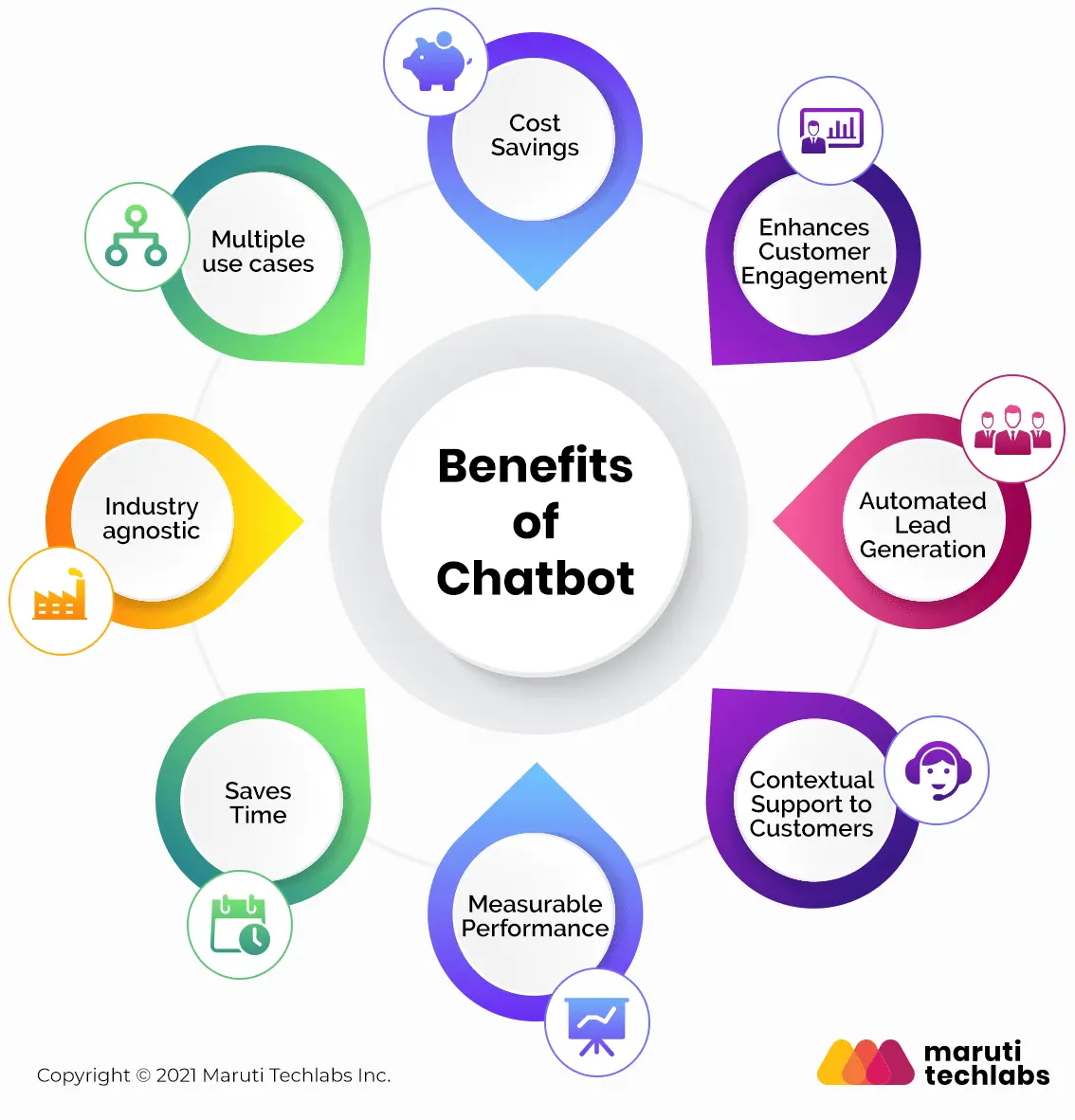
Ecommerce AI chatbot is changing the game for online stores, making shopping easier for customers and managing tasks simpler for businesses.
Here's how they're making a big splash.
Improved Customer Service & Availability
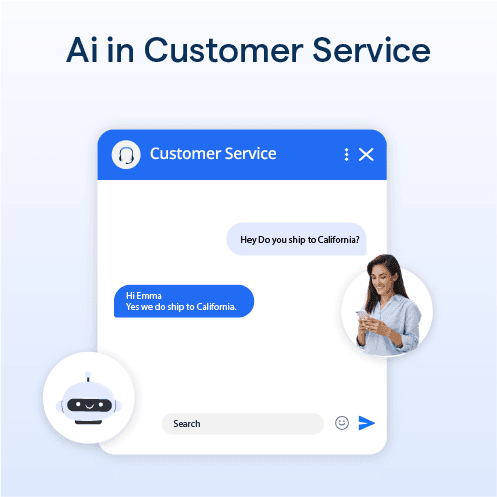
An ecommerce AI chatbot is like a superhero for customer service. It never sleeps, meaning it can help customers round the clock. If someone has a question in the middle of the night, the chatbot is there to answer, making shopping easy and stress-free any time of the day.
Increased Sales & Conversion Rates
Ecommerce AI chatbot, like BotPenguin, are like top-notch salespeople who know exactly what a customer wants. They guide shoppers, provide recommendations, and help them through the checkout process, boosting sales and conversion rates in the process.
Personalized Shopping Experiences
Shopping online can sometimes feel a bit impersonal. Ecommerce ai chatbots change this by offering personalized shopping experiences. They remember your preferences, suggest products you might like, and make shopping feel more like a conversation with a friend who knows your taste.
Reduced Operational Costs
Hiring a team to provide round-the-clock customer service can be expensive. An AI chatbot for ecommerce does this job, saving businesses a lot of money.
Valuable Customer Data & Insights
Ecommerce AI chatbot is like detectives gathering clues. They collect data on customer preferences and behaviors, giving businesses valuable insights. This information helps businesses tailor their services and products to meet customer needs better.
Common Use Cases for Ecommerce AI Chatbots
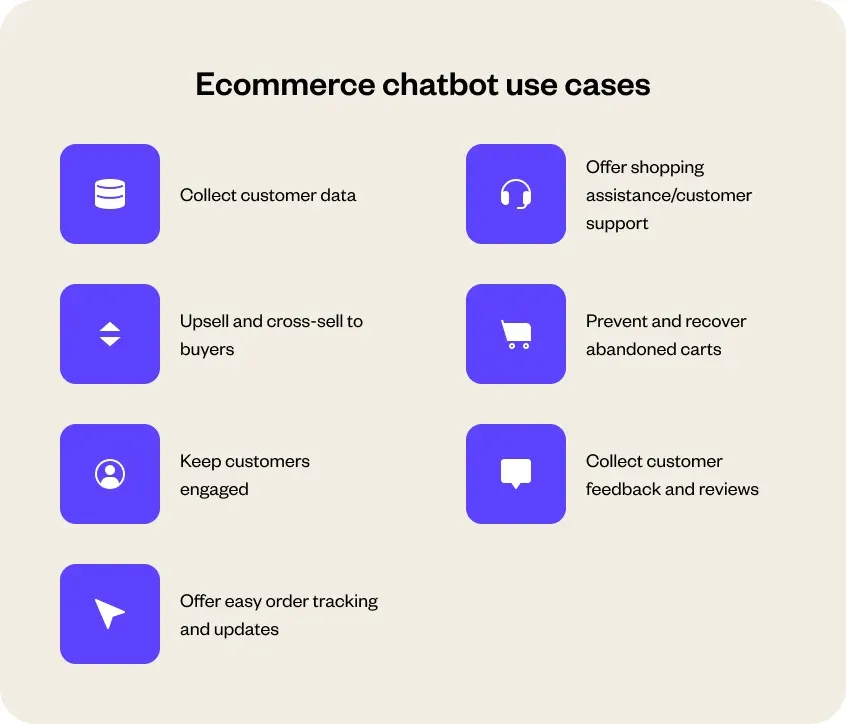
Ecommerce AI chatbot has transformed online shopping into a more interactive and personalized experience. These digital assistants play various roles, from guiding shoppers to making sales.
Ever had a question about a product and wished for an instant answer? That’s what an ecommerce AI chatbot does. It provides instant responses to questions about products, orders, and more, making shopping smoother and faster.
Providing Product Recommendations
Imagine having a personal shopper who knows exactly what you like. That's what it feels like when chatbots make product recommendations based on your preferences and previous shopping history.
Facilitating Order Tracking & Returns
Checking on an order or making a return can be a hassle. Ecommerce AI chatbot, like BotPenguin, streamlines these processes, acting like a helpful guide through order tracking and returns, making sure you’re always in the loop with minimal fuss.
Upselling & Cross-Selling Products
Chatbots are also savvy sales experts. They can gently suggest additional products that complement what you’re buying, enhancing your shopping experience and helping you discover new favorites.
Building a Winning Ecommerce AI Chatbot Strategy
Creating a strategy for your ecommerce AI chatbot is like building a bridge between you and your customers. It's not just about having a chatbot; it's about making it the best possible helper for both your team and your customers. Let’s dive into how you can achieve this.
Define Your Chatbot Goals & Target Audience
First things first, figure out what you want your chatbot to do. Is it helping shoppers find the right products? Or maybe it’s answering questions about their orders? Knowing this will help you keep your Ecommerce AI chatbot focused.
Identify Key Customer Needs & Pain Points
Understanding what trips up your customers is crucial. If they’re always asking about return policies, make sure your Ecommerce AI chatbot has those answers at the ready.
Align Chatbot Functionalities with Business Objectives
Your ecommerce AI chatbot should be a team player, helping you hit your sales targets by recommending products or offering deals.
Tailor Chatbot Personality to Target Audience
Give your chatbot a personality that resonates with your customers. If your shop is all about outdoor adventures, maybe your bot is the eager guide ready to help plan the next big trip.
Craft Compelling Chatbot Conversations
Conversation is key. You want chatting with your bot to feel as natural and helpful as talking to a good friend.
Develop Natural Language Processing (NLP) Capabilities
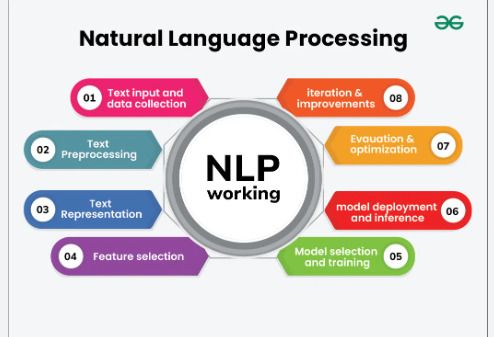
The better your chatbot understands human language, the more helpful it can be. Investing in a good NLP means fewer customers saying, “Sorry, I didn’t get that.”
Design Clear & Concise User flows
Mapping out conversations beforehand ensures your chatbot doesn’t lead customers down confusing paths. Think of it like planning the most direct routes on a map.
Employ a Conversational & Engaging Tone
Chatbots should be friendly and approachable. There’s no room for robot talk here—make your bot as human as possible.
Include Multiple Response Options & Escalation Paths
Sometimes, a chatbot can’t solve everything. Having an easy way for customers to talk to a human is like having a safety net.
Ensure Smooth Data Flow between Chatbot & Platform
Information needs to flow freely between your chatbot and your ecommerce platform. When a customer asks about an out-of-stock item, your bot should know and suggest alternatives.
Integrate with Customer Relationship Management (CRM) Tools

Hooking up your Ecommerce AI chatbot with CRM tools means it can offer help that’s tailored to individual customers, like suggesting a product they’ve been eyeing but haven’t bought yet.
Enable Real-time Order & Inventory Updates
Customers appreciate up-to-the-minute updates. Ensure your bot can inform them about their order status or if their favorite item is back in stock.
Offer Multiple Communication Channels (Website, Mobile App, etc.)
Not everyone shops the same way. Some might visit your website, while others prefer an app. Make sure your ecommerce ai chatbot is where your customers care.
Expert Tips for Optimizing Your Ecommerce AI Chatbot

In this section, you'll find expert tips for optimizing Ecommerce AI chatbot.
Training and Optimizing Ecommerce AI chatbot
An ecommerce ai chatbot can be your best partner with the right training and tuning.
Leverage Machine Learning (ML) for Continuous Improvement

The secret sauce for making your chatbot smarter is machine learning. Your ecommerce ai chatbot does something similar, learning from chats with customers. The more it chats, the sharper it gets.
Utilize AI to Refine Response Accuracy & Relevancy
AI in chatbots is like a good detective, picking up clues from conversations to make better guesses next time. It's all about giving answers that are spot-on and super relevant to what your shopper needs.
Creating a Human-in-the-Loop Approach
Even the smartest ecommerce AI chatbot needs a human buddy sometimes. That's where a human-in-the-loop approach comes in, blending the best of both worlds.
Identify Complex Inquiries Requiring Human Assistance
Some questions are too tricky for a bot. Like a tag team, when the bot gets stumped, it tags in a human to take over without missing a beat.
Design Clear Handoff Protocols & Information Sharing
The transition from bot to human should be smooth, like passing a baton in a relay race. Both the bot and the agent should know what's going on to avoid asking the customer to repeat themselves.
Train Live Agents for Effective Chatbot Continuity
Your live agents should jump in like superheroes, ready to save the day. Training them means they know exactly where the bot left off and can keep the conversation flowing without a hitch.
Personalizing the Ecommerce AI Chatbot Experience
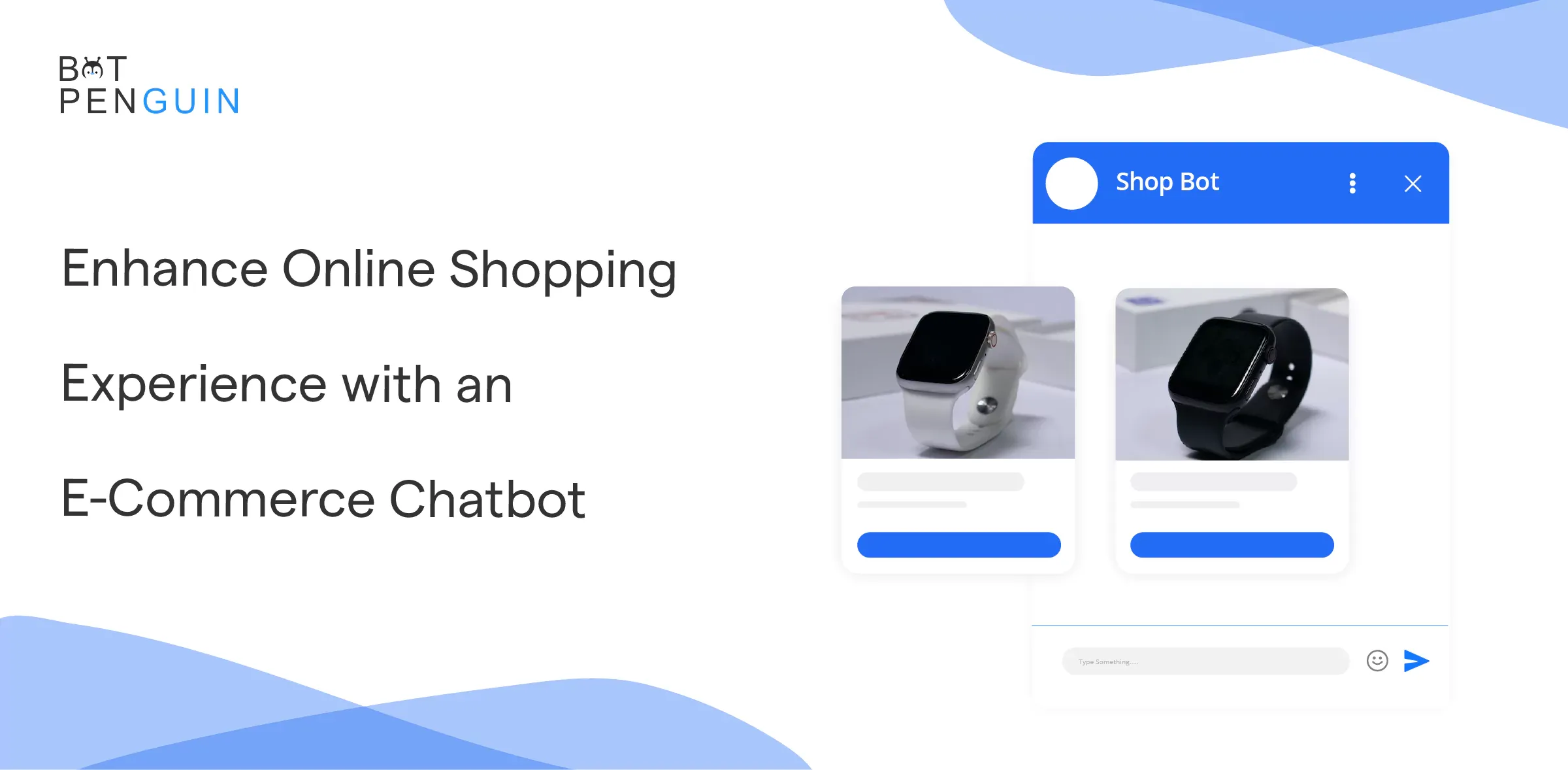
Ever thought how cool it would be if your online shopping buddy remembers not just your name but also what you like?
That's where personalizing the ecommerce ai chatbot hits home.
Personalize Greetings & Product Recommendations
Imagine opening your favorite shopping app and being greeted like an old friend. Your ecommerce AI chatbot says, "Hey [Your Name], welcome back! Looking for more of those sneakers you love?" It knows you and your taste.
Offer Past Purchase & Browsing History Insights
How about a chatbot that reminds you, "You checked out these jeans last time. Still interested?"
Tailor Chatbot Responses Based on User Behavior
Picture this: you're browsing, and the chatbot suggests, "People who liked this also loved…" based on what you often check out. Your chatbot is getting smarter, tailoring its chat just for you.
Always Consider User Experience (UX)
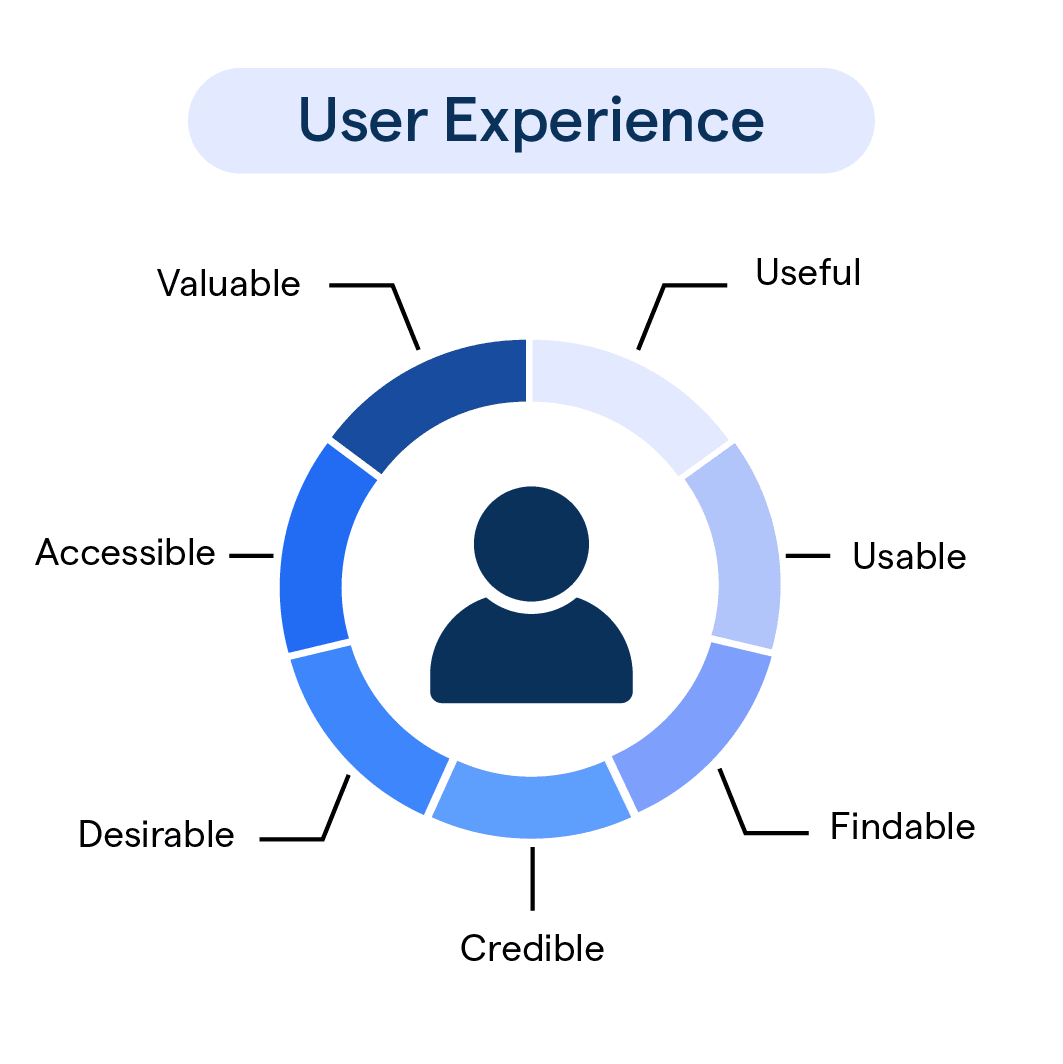
No one likes waiting or getting lost in complicated menus. A top-notch user experience is smooth sailing, where everything just works, quick and simple.
Minimize Load Times & Delays in Conversation Flow
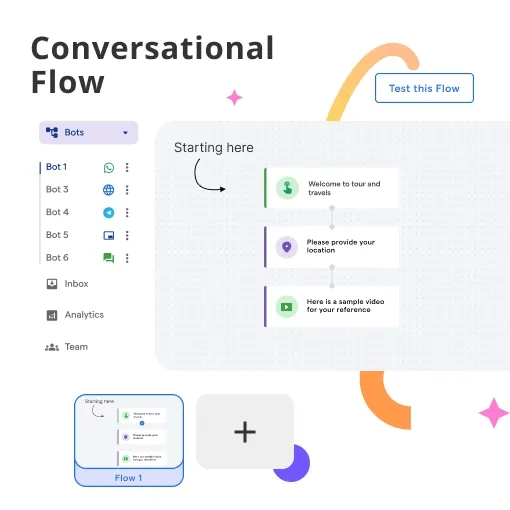
Imagine asking a question and getting a snappy response. No waiting, just like chatting with a friend. That's the goal. Your ecommerce ai chatbot shouldn’t make you wait. It’s all about the zip and zoom.
Offer Clear & Easy-to-Understand Information
When you ask for something, you want a clear answer, not a puzzle. Your chatbot should hand you info on a silver platter, easy to read and easier to understand.
Provide Options for Self-Service & User Control
Sometimes, you just want to do things your way. A great chatbot gives you the reins, offering choices like, "Would you like to track your order or see more like this?" It's all about making you feel in control.
By sprinkling a bit of personal touch and focusing fiercely on user experience, an ecommerce ai chatbot transforms from just a tool into a personal shopping buddy. One that knows you, helps you navigate smoothly, and makes online shopping a breeze. It's like having a friend inside your shopping app, always ready to help, and making sure you leave happier and maybe with a parcel or two on the way.
Stay Updated with the Latest AI Chatbot Trends
With an ecommerce ai chatbot, you're setting the pace. The latest tricks? They're all about talking smoothly and understanding feelings.
Integrate Voice Recognition & Chatbot Voice Assistants
Picture this: You tell your shopping app what you want, and it listens - just like that. "Find me a red dress," you say, and bam, options galore, right in front of you. Voice recognition is the nifty trick up the ecommerce ai chatbot sleeve, making shopping hands-free and hassle-free.
Utilize Sentiment Analysis for Personalized Support
Happy? It'll ride that wave with you.
Not so much?
It'll try to make things right. Personalized support takes on a whole new meaning when your chatbot understands not just what you say, but how you feel.
Conclusion
In conclusion, the implementation of AI chatbots for ecommerce has revolutionized online retail, offering unprecedented opportunities for customer engagement and sales growth. As we've explored, ecommerce chatbot use cases are diverse and impactful, ranging from personalized product recommendations to streamlined customer support. To fully harness the power of an ecommerce AI chatbot, businesses must focus on continuous optimization and refinement.
By leveraging advanced platforms like BotPenguin, companies can create sophisticated AI chatbots for ecommerce that adapt to customer needs and market trends. These chatbots learn from each interaction, improving their ability to assist customers and drive conversions. The key to success lies in striking the right balance between automation and human touch, ensuring that AI chatbots for ecommerce enhance rather than replace the human element of customer service.
As technology evolves, so too will the capabilities of ecommerce AI chatbots. Staying ahead of the curve requires a commitment to ongoing learning and adaptation. By embracing best practices and innovative solutions like those offered by BotPenguin, businesses can ensure their ecommerce chatbot use cases remain relevant and effective. The future of online retail is undoubtedly intertwined with AI, and those who master the art of chatbot optimization will be well-positioned to thrive.
Frequently Asked Questions (FAQs)
How can I make my ecommerce AI chatbot more user-friendly?
Focus on designing intuitive conversation flows and provide clear, easy-to-follow responses that guide users smoothly through their shopping journey.
What's the key to improving AI chatbot customer service?
Train your chatbot with a diverse range of queries and scenarios to ensure it can handle a wide array of customer requests effectively.
How do I ensure my ecommerce AI chatbot understands customer intents?
Regularly update and refine your chatbot's natural language processing capabilities to better interpret and respond to the nuances of human communication.
Can AI chatbots help in personalizing the shopping experience?
Yes, by analyzing user data and past interactions, AI chatbots can offer personalized product recommendations and deals, enhancing the shopping experience.
How do I measure the success of my ecommerce AI chatbot?
Monitor metrics like user engagement, resolution rate, and customer satisfaction scores to gauge the effectiveness and impact of your chatbot on the customer experience.

